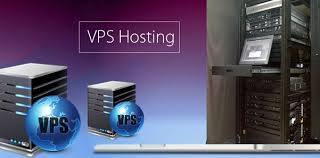Software
Everything You Need to Know About Digital Signage
The first thing you should know is that it isn’t as difficult or complicated as the many YouTube videos make it seem. You can start as small as you like and then build yourself up to the more complicated stuff. In fact, take your Smartphone right now, go onto YouTube, press the “Cast To” icon, select your TV (assuming it is a modern one), and screencast the video you are watching to your TV. There you go, you have made your first digital sign.
All Screens Can Be Digital Signs
TVs are amazingly cheap these days thanks to China’s currency peg. They are able to churn out very cheap TVs that still have brilliant image quality. If you want your TV to become a digital sign, then so long as you keep it indoor and away from people’s sticky fingers, then you should be fine. PC monitor can be a digital sign too if you wish.
There are digital signs on sale but know that anything with a screen can be called a digital sign. Still, when you see digital signs being sold, they often have features that make them better suited to be digital signs. For example, some are lightweight and easy to mount on walls, some allow for touch screen interfaces, and some have guards and cases that allow them to go outside in bad weather. Still, keep in mind that “Digital sign” is not a protected term. An unscrupulous retailer could offer up the same digital screen, call one a TV and sell it for $100 and call the other a digital sign and sell it for $300.
A PC or Media Device
If you want, you can put a streaming app on your digital sign and stream some content. Or, you can use a media device or PC and have that send the information to your digital sign. Similar to how your Smartphone can cast a YouTube video to your TV, you can use something like an Apple TV and have it display your videos on a digital sign.
A media device or a PC can stream a video off the Internet and display it on digital signs. Or, you can store the videos on your device and have them displayed on your digital signs. This puts far less strain on your Internet, though may be a little trickier.
Making Your Videos
You can keep things simple by having somebody else create a single video, and then stream it onto your device. Or you can create your own videos and send different ones to different signs. Then there are live feeds. A live feed can be as simple as a weather report that shows up on your digital sign the same way it shows up on your computer. On the other hand, you may have your live feed linked to your sales figures, and your digital sign shows your sales figures in real time.
There are digital sign software solutions out there. These are pieces of digital signage software that allow you to create your videos, send them out to different digital signs, and even create schedules and add live feeds. This is a little more advanced but is a good way to make full use of your digital signs.
Scaling Up
Jumping right in with 30 digital signs that run in sequence around your store is pretty bold but will be a mini nightmare to set up and maintain. Unless the situation calls for something different, you should probably start small and then scale things up as you go. Start with one or two digital signs and a media device and learn all you can about how the software works. More importantly, get a little experience and learn how to troubleshoot the sorts of problems you are going to experience.
As time goes by, you can learn how to add live feeds, how to add things like payment consoles, how to add QR codes, how to schedule your content, and how to make dynamic content or multi-screen content that makes a full single image.
Consumer, Commercial and Industrial
The definitions are pretty broad, but most people believe there are three types of digital sign setup. There is the consumer type, which is where you use TVs and digital signs and maybe something like Apple TV. Then there is commercial where you typically have a PC and perhaps a network, and you run your many digital signs from a central hub. Then there is industrial, where you have digital signs that are specially made to be fit for purpose, and you may have servers set up to run your digital signs.
Unless you are starting on a big scale, then none of these definitions should really matter to you. When buying your own digital sign software and hardware, you need only pick the things that suit your specific circumstances. In essence, you build your own digital signage solutions based on your needs, such as if you need them outdoors, indoors, touch screen, live feeds, etc. Start small and start simple, and you can work your way up to the more advanced stuff as you go along.














